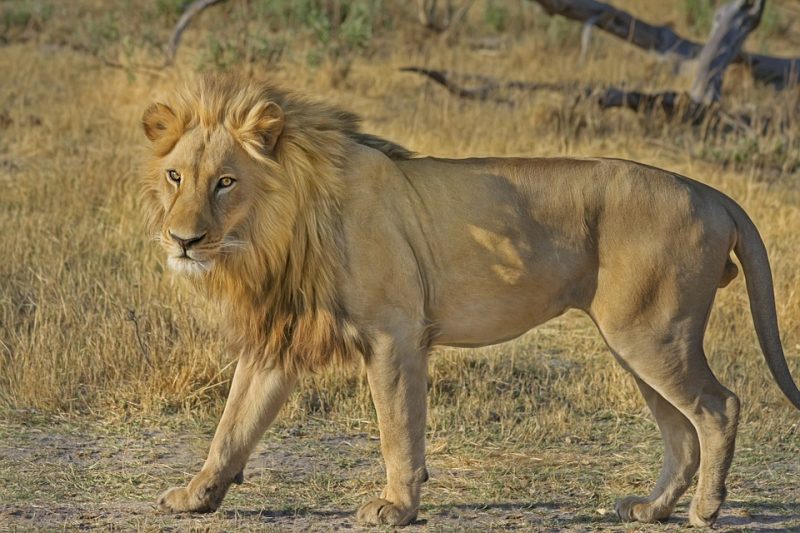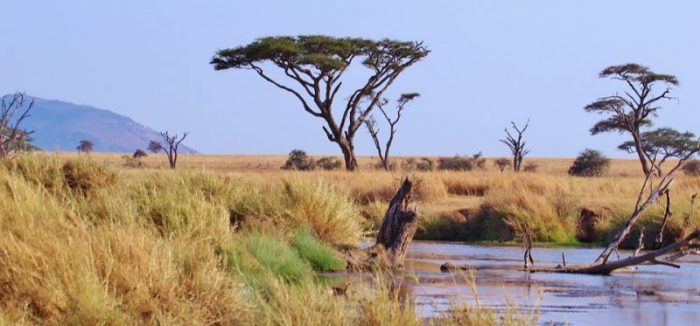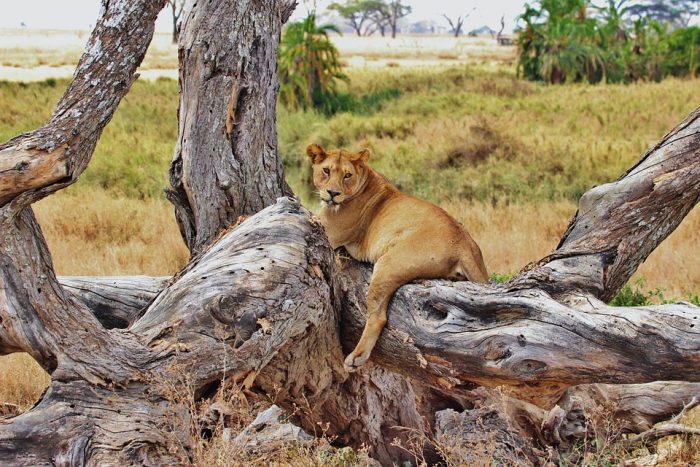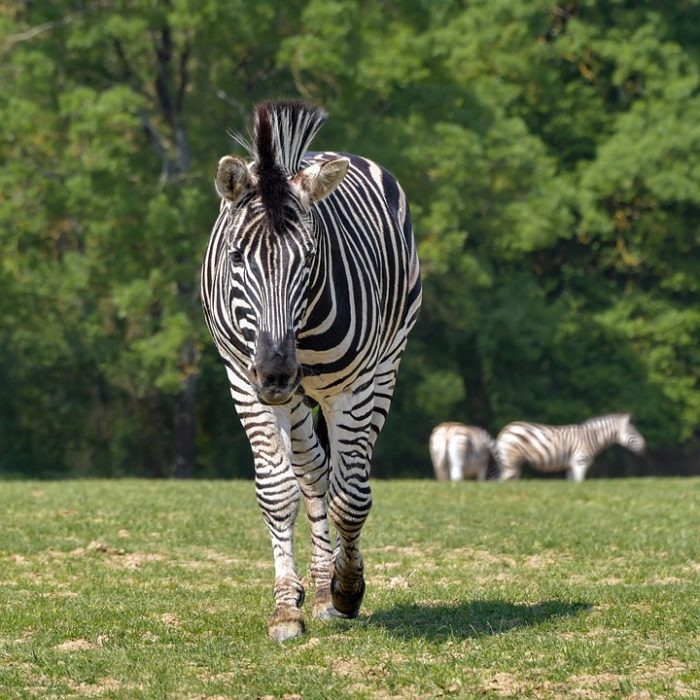
Lions are one of the most striking animals on earth, being large cats with impressive manes on the males and a deep roar. They are found mainly in tropical savannas. Lions are the apex predators of their domain, but what domain is that?
What habitats do lions inhabit? What roles do they play in the ecosystems of these regions? Let’s take a closer look at lions and their habitats to answer these questions.
Facts About Lions
Lions are a species within the Felidae family. Lions are quite large and display sexual dimorphism, as the males are even larger than the females. Male lions typically weigh somewhere between 150 to 250 kg or 330 to 550 pounds. Meanwhile, female lions way somewhere between 120 to 182 kg or 625 to 400 pounds.
Lions are active at all times of the day, though they tend to be more active in the daytime, in contrast to other big cat species. Lions live in a small congregation of individuals called a pride. A pride is usually made out of just a few adult male lions and the females related to them, as well as their cubs.
Lions are the apex predators of their domain. Being an apex predator means that the lion has no natural predators, nothing that hunts them in their natural range. Despite the fact that lions are apex predators, they are confined to small populations and on the verge of being endangered. The International Union of Conservation for Nature has listed lions as vulnerable since the year 1996 due to the fact that populations of lions have declined substantially, by around 42%, since the 1990s.
Lions are believed to have evolved from their predecessors sometime around 1 million to 800,000 years ago during the Pleistocene in Africa. From there, the species spread out across the Holarctic region, throughout almost all of Africa, parts of the Middle East, India and possibly even Europe. Today, however, lions are only found in Southern Africa and East Africa and a few small populations confined to the Gir National Park in western India.
The Habitat Of Lions
Lions are found in Africa in various habitats including woodlands, deserts, plains, and savannas. However, while lions are occasionally found in deserts and woodlands, they prefer to live in savannas and grassy plains. Though lions could once be found in parts of the central rainforest in Africa and in the Sahara desert, lions are now clearly extinct in northern Africa except for small populations found in southern Sudan. Asiatic populations of lions live around the Gir Forest National Park, which is a mixture of dry deciduous forest and savanna forest.
Facts About Savannas
Savannas are a mixture of grasslands and wooded areas that occur at tropical latitudes throughout the world. Savannas have a high tree density, yet they also have an open canopy. One of the primary distinguishing characteristics of savannas is that they have wet and dry seasons, with most of the rainfall occurring in one season. It is estimated that the Earth’s land area is made out of approximately 20% savanna.
There are both closed forest savannas and open forest savannas. While savannas are usually associated with tropical regions, they do not have to exist at tropical latitudes. Savannas can also be temperate savannas found at mid-latitudes, Mediterranean savannas found in the Mediterranean region, and Montane savannas which occur at high altitude regions. The savannas that lions live in are tropical savannas, and they include the Serengeti – a large swath of savanna that is found in Africa.
The Serengeti is found mainly in northern Tanzania, though it does extend into Southwest Kenya. The Serengeti sees one of the largest migrations of terrestrial animals in the world, and it is home to an incredibly large and diverse category of fauna. Over 500 different species of birds and 70 large mammals are believed to inhabit the Serengeti. These include animals like gazelles, buffaloes, zebras, warthogs, topis, and impalas, many of which are preyed on by lions. Other species of big cats like leopards and cheetahs are also found in the Serengeti.
Savannas that are made out of rainforests or broadleaf forests don’t usually see much grazing by herbivorous animals due to the fact that the closely growing trees and plants prevent much grass from growing. In contrast, open savannas frequently have thick regions of grass that plant eaters can graze on. The Serengeti is one of these open savannas and grazed on by many plant eaters which lions prey on in turn.
The Central African lion Is the population of lion found in the Serengeti, and it also inhabits other portions of Africa like the Bénoué National Park in Cameroon, and the Central African Republic. There are distinct populations of lions referred to as the West African Lion which can be found in the Sahel zone. They live in disconnected populations found in Senegal, Benin, and Nigeria.
The habitat of lions has shrunk significantly over the past few decades, with this range declining in areas like the Democratic Republic of Congo, the southern Darfur province in Sudan where lions were the subject of a massive hunting campaign, and the Manda National Park in Chad where lions have been extirpated.
Prey For Lions
Lions are capable of feeding on just about any animal within their range. However, they have a preference for ungulates like buffaloes, zebras, wildebeests, and gazelles. While capable of taking down animals like rhinoceroses and hippos, they will usually avoid these species. Lions occasionally prey on warthogs as well, though they are smaller prey than they usually prefer. While lions occasionally kill other predators like cheetahs, hyenas, and leopards, they rarely consume them.
Different populations of lions may specialize in or prefer the hunting of certain species of animals, using them to make up the majority of their food. For instance, in the Serengeti gazelles, zebras, and wildebeests form the backbone of a lion’s diet. Similarly, buffalos, giraffes, and zebras are the common prey for lions in Kruger National Park. Meanwhile, Asian lion populations subsist mainly on chital and sambar deer.
Lions are considered to be keystone predators, whose existence helps stabilize the Ecosystem that they live in. The hunting that lions do helps keep populations of other animals stable, such as controlling populations of wildebeest, gazelles, and buffalo. This prevents these animals from overgrazing areas, which could have destabilizing effects on the rest of the ecosystem.












